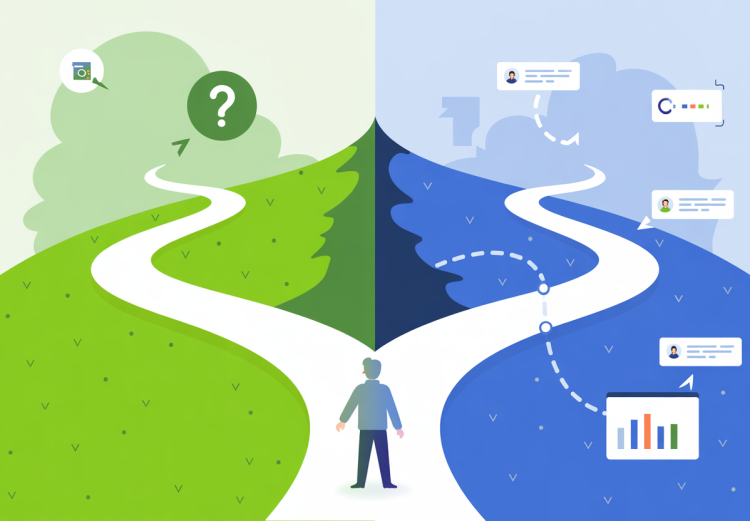You don’t need more opinions. You need evidence. Most product teams aren’t short on ideas—they’re short on validation. Assumptions feel fast. But they often take you in the wrong direction.
Testing may seem like a detour. It’s not. It’s how you move forward with clarity, not just confidence.
Let’s break down why guessing costs more than you think—and how to test smarter.
Why Guessing Hurts More Than It Helps
Guessing Might Feel Efficient—But It Comes with a Hidden Cost
Assumptions Waste Time, Energy, and Trust
When you build based on untested ideas, you risk:
- Shipping things users don’t care about
- Burning cycles fixing the wrong problems
- Losing team trust when initiatives flop
It’s not just a waste of time—it’s a drain on momentum.
Teams That Guess Tend to Build the Wrong Thing
Guesses often come from:
- Gut feelings
- Highest-paid opinions
- Past experiences in different contexts
Even smart guesses go wrong when they’re built on outdated or incorrect signals.
Confidence Without Data Is Risky
Being confident doesn’t make you correct. It makes you louder. In product work, what feels obvious is often wrong.
The best teams don’t rely on conviction. They run tests to find out what’s actually true.
The Case for Testing Early and Often
Testing Isn’t About Perfection—It’s About Learning Faster and Smarter
Testing Turns Opinions Into Insights
Instead of debating what’s right, test it. Let the data decide. Experiments cut through subjective opinions and give your team something real to work with. Insight > argument.
You Learn Faster When You Treat Everything as an Experiment
When you test ideas in small ways, you create constant opportunities to learn. Every headline, layout, feature, or message is a chance to:
- Observe behavior
- Capture data
- Adjust quickly
Small loops add up to big wins.
Testing Reduces Risk Without Slowing You Down
People fear testing because they think it delays progress. It doesn’t. It helps you skip bad builds and costly pivots later on. Testing isn’t a slowdown—it’s a shortcut to better decisions.
Simple Ways to Start Testing Your Ideas
You Don’t Need a Massive Setup or a Team of Data Scientists
You just need to be curious—and intentional.
Run Fast, Focused Experiments (No Need to Build It All)
Before building a feature, test the idea behind it. Try:
- A fake landing page
- A clickable prototype
- A manual concierge version
All signal, no bloat.
Use Surveys, Clicks, and Customer Behavior as Signals
Watch what people do—not just what they say. Look for:
- Click-through rates
- Drop-off points
- Unexpected behavior patterns
Your users are telling you what works. Are you listening?
Learn from Small Samples Before Scaling Big
You don’t need 10,000 users to validate a good idea. Sometimes, 10 clear signals are enough to guide a smart move. Start small. Scale only what earns its place.
Building a Culture of Testing in Your Team
It’s One Thing to Run a Few Tests—It’s Another to Make Testing a Way of Working
Reward Learning, Not Just “Being Right”
If people only get praised for success, they’ll avoid experiments. Make learning the win. Celebrate the test—even when it disproves your favorite idea.
Make Testing a Habit, Not a Project
Testing shouldn’t be a special event. It should be built into how you explore problems, build roadmaps, and launch features. Think:
- Always test copy
- Always test design ideas
- Always test assumptions
Make it routine.
Share What Worked—And What Didn’t
The whole team learns faster when insights are shared. Create lightweight feedback loops. Make experiments visible. And normalize talking about what failed.
That transparency builds a smarter, stronger culture.
Curiosity Wins—Always
The best teams don’t guess. They ask. They test. They learn.
Whether you’re launching a product, writing a headline, or choosing a roadmap priority—test it. Because the only thing riskier than testing… is assuming you already know.


